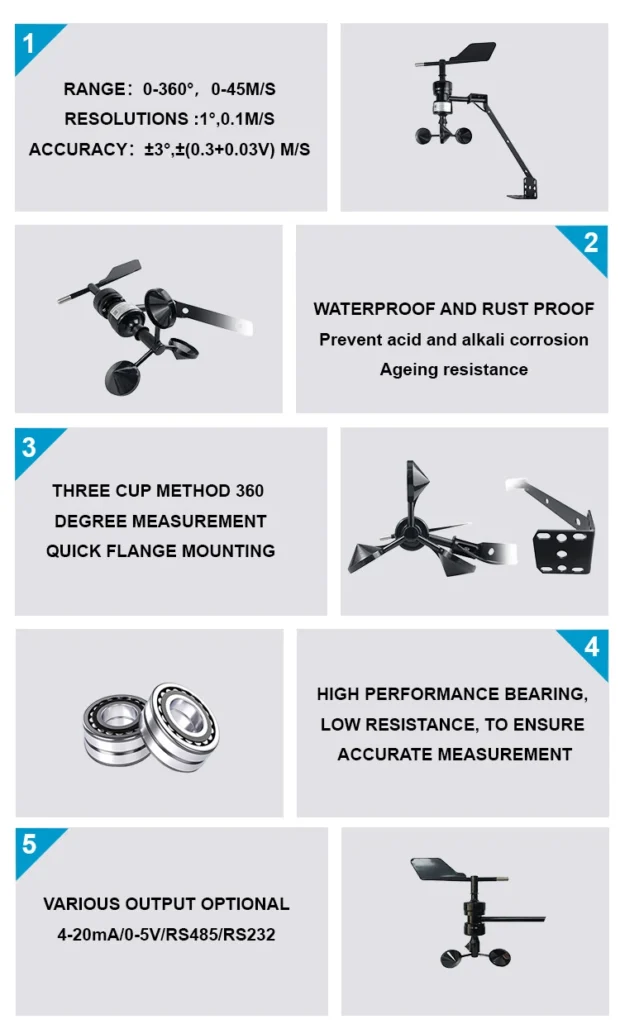wind speed measure tool & wind speed measurement tool
An anemometer is a device that measures how fast the wind blows and which way it is going. There are different type of anemometer, such as cup, vane, pitot tube anemometers ,sound waves anemometers and hot-wire. Cup anemometers use spinning cups to measure wind speed.
Vane anemometers have a small propeller to check both speed and direction. Hot wire anemometers wind meter use a heated wire to find digital wind speed. They notice changes in resistance when the wire cools down. This occurs due to the speed of the air flow.
A handheld anemometer measures both wind speed and direction in one device. It has many benefits:
1. Device Overview:
This sensor has a digital anemometer instrument for measuring wind speed. It also has a wind vane to show the direction.
It has a spinning blade and a tool that checks air speed. Both moving parts are in one unit. This design makes it easier to install and saves space.
2. Advantages:
– This sensor measures the wind. It gives accurate readings of wind speed and direction at the same time. This helps us understand changes in the wind better.
– Accuracy: This sensor has high precision and sensitive parts. It gives accurate data for many uses.
– Quick Response: It quickly adjusts to changes in the wind. It gives real-time data that helps with quick monitoring and decision-making.
– Durability: These sensors are made from strong materials. They can handle tough weather conditions and resist wind, dust, and water damage.
3. Application Value:
– Weather observation and forecasting are important. These sensors help us study the weather. They give accurate wind data. This data helps with forecasts and risk assessments.
– Aviation and maritime: Accurate wind information is important for safety in both fields. It helps make decisions by using data in real time.
Keeping an eye on wind conditions is important for managing crops in farming. Integrated sensors help improve irrigation and greenhouse ventilation.
In conclusion, the Integrated Wind Speed and Direction Sensor instrument used to measure wind direction and speed. It gives precise measurements and fast responses.
Its strong design makes it good for many places and uses. This includes weather, flying, sea work, and farming. It gives important data support for all these areas.
Installation of One-Piece Wind Speed and Direction Sensor:
To install the sensors, place the wind direction sensor at the top. Put the wind speed meter sensor at the bottom. Make sure the sensor is straight up and down with the ground.
The wind direction sensor has a white spot for mounting. Use the compass that comes with it. First, aim this device to the south before you use it.
Troubleshooting:
If the wind vane is not turning well or is slow, it might have dirt in the bearing or old oil. You can add oil to the upper bearing of the sensor. You can send the sensor back to the company for repair.
If the analogue output shows 0 or is out of range, there might be a wiring problem. This can lead to the system sending wrong data to the collector. Check the wiring connections to ensure everything works well.
